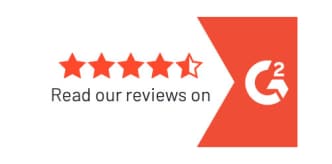When it comes to selecting a 401(k) plan, you may not know where to start. You may also be confused by the options that are presented to you, and in many respects do not know what questions to ask even when the opportunity is given. I want to help everyone understand why you should add what is called a “Safe Harbor” provision to your 401(k) plan. There are a couple of things to look over before this option makes total sense.
Let’s first look at one thing that is actually a pretty big deal when it comes to offering a 401(k) Plan. That’s the nondiscrimination testing and how it affects you and your retirement benefit.
Nondiscrimination Testing & Its Importance
Quite simply, every year, every 401(k) plan must go through nondiscrimination testing. There are multiple tests within this that we don’t necessarily need to unpack, but two of these tests, in particular, are important to know.
The two prominent nondiscrimination tests are the following:
- ADP/ACP Test
- Top Heavy Test
I’ll only provide a short summary here for these tests to give you perspective.
ADP/ACP – Average Employee Deferrals/Employer Contributions
The ADP/ACP looks at all those highly compensated employees (anyone that earned over $125,000 in 2019 would be considered highly compensated) and/or has over 5% ownership in the company. This test then compares the average contribution by these highly paid individuals to those that don’t fit that criteria (we’ll refer to those as “staff employees”). This test happens every year. If the participation from the highly compensated employees exceeds a certain percentage of those staff employees, we’ll say by 2%, this test will fail.
- E.g. If the average of the highly paid employees and/or owners is 8%, while those staff employees is 4%, the plan would fail this test. The 2% threshold would mean the highly paid and ownership group couldn’t exceed 6% for their average.
The result? There would need to be a refund of some (perhaps all) contributions made by those highly compensated employees (this includes owners regardless of pay). OR you can make an employer contribution to all employees that are not highly compensated. It isn’t exactly this cut-and-dry, but I think you should know that possible refund or mandatory contribution is required if this test is failed.
Top Heavy Testing
The Top Heavy test looks at those “key” employees, which are your executives and owners. If at the end of the year the total 401(k) plan balance (everyone) has over 60% from these key employees (executives, owners, etc.), then the plan fails the Top Heavy test and would have to make a contribution up to 3% to all non-key employees (this could even include some of those highly compensated employees) in any year afterward that those key employees make contributions.
More info can be found in this article HERE.
- E.g. If the total 401(k) plan assets are $200,000, and $122,000 (61%) of those total assets are key employee assets, then it is a Top Heavy failure.
Now that we have the confusing testing portion out of the way, let’s look at the Safe Harbor option and why they are great for a small business.
A Safe Harbor 401(k) Plan is one in which you, as the employer, agree to using a certain formula to match or provide contributions to your employees that participate in the plan. The biggest perk to having this Safe Harbor provision is that it gives you an exemption from the tests previously mentioned. Yes, that’s right, EXEMPTION. So, if you fail any or both of those tests, you’re exempt from the results if you are Safe Harbor.
Safe Harbor Choices
What are your options for Safe Harbor? Here are the different Safe Harbor options by name:
- Basic Safe Harbor
- Enhanced Safe harbor
- Qualified Automatic Contribution Arrangement (QACA) – “Safe Harbor Auto-Enrollment”
- Safe Harbor Non-Elective (Profit-Sharing)
Let’s go through each one of these so you can understand how they work and more fully know the options and costs.
Basic Safe Harbor
This is the lowest cost Safe Harbor if you don’t add an auto-enrollment. Essentially, you only match what is deferred into the 401(k) plan by employees participating.
Formula – Match 100% up to 3% of employee deferred pay and 50% after up to 5%. Total expense is 4% if an employee puts in 5% or more.
- E.g. – An employee is paid $1,000 on a pay check and wants to put in 5% of pay. This is a total of $50. As an employer using this Safe Harbor you would match 4% (max), and it would be $40 in this example.
Any employer matching contribution is 100% vested. That means, once it goes into the employee’s 401(k) account, it is theirs.
Enhanced Safe Harbor
This is considered a very rich employer match for your employees.
Formula – Match 100% up to 4% OR 5% OR 6% of employee deferred pay. You would have to pick one of these formulas, you couldn’t switch between them.
- E.g. If you selected Enhanced Safe Harbor 4%, an employee paid $1,000 and wanting to contribute 4% of pay, which is $40, would receive a match of $40. Again, 4% is the maximum employer match.
Any employer matching contribution is 100% vested.
Qualified Automatic Contribution Arrangement (QACA)
This is typically referred to as a “Safe Harbor Auto-Enrollment.” That is because it combines the component of auto-enrollment (if your employees don’t “opt-out” from being enrolled into the plan, then they will be automatically enrolled).
Formula – Match 100% up to 1% and 50% after up to 6%. Total expense to the employer is 3.5% if the employee puts in 6%. (Please note, although the total expense is lower and the employee has to defer more of their pay in order to receive more match, the auto-enrollment part of this shouldn’t be overlooked. It will pull more employees into the 401(k) plan through inertia.)
- E.g. If you selected a QACA Plan, an employee paid $1,000 and wanting to contribute 6% of pay, which is $60, would receive a match of 3.5% or $35. The maximum is 3.5% employer match. So, even if an employee put in 20% of pay, the employer would only be putting in 3.5%.
You can choose between a few vesting options. You could select a 2-year cliff (1 year – 0%; 2 year 100%), a 50-50 split (1 year – 50%; 2 year – 100%) or 100% vested immediately.
Safe Harbor Non-Elective
This is a Safe Harbor profit-sharing. It can be up to 6% of employee pay, but is typically at 3% of annual pay. You would have to make that decision annually, and cannot reduce 6% down to 3%, for example.
Formula – Employer non-elective (not related to employee deferral contributions) is 3% of eligible employee’s gross pay (required annually). Eligible pay is $285,000 in 2020 (so if someone has over that amount it would cap there and would be 3% of the $285,000).
- E.g. If you have 5 eligible employees and their gross pay $300,000, then your required Safe Harbor Non-Elective contribution would be $9,000 (3% of pay respectively).
This is 100% vested.
Now, why would you choose Safe Harbor if you have to provide for an employer contribution and follow a specific set formula? The two main reasons are the exemption from the nondiscrimination testing and the reduction in business taxes from that employer contribution. Employer contributions into a 401(k) plan go in pre-tax. So, figure your total tax liability and consider your pre-tax contributions.
It’s always recommended to talk with a tax professional for more details on the tax benefits, but in general, if you could give a benefit to your employees instead of paying that amount in taxes, would you do it?
At 401GO we have many different plan design options, including all the Safe Harbor plans mentioned in this article. Plus you can get set up in under 15 minutes. It’s easy to use, and handles all aspects of the required annual administration. Talk to us today to more fully understand these options.
Make 401K Savings Easy, Fun, and Personal for Your Employees
401GO simplifies the 401(k) retirement savings process for business owners, HR professionals, and employees.



